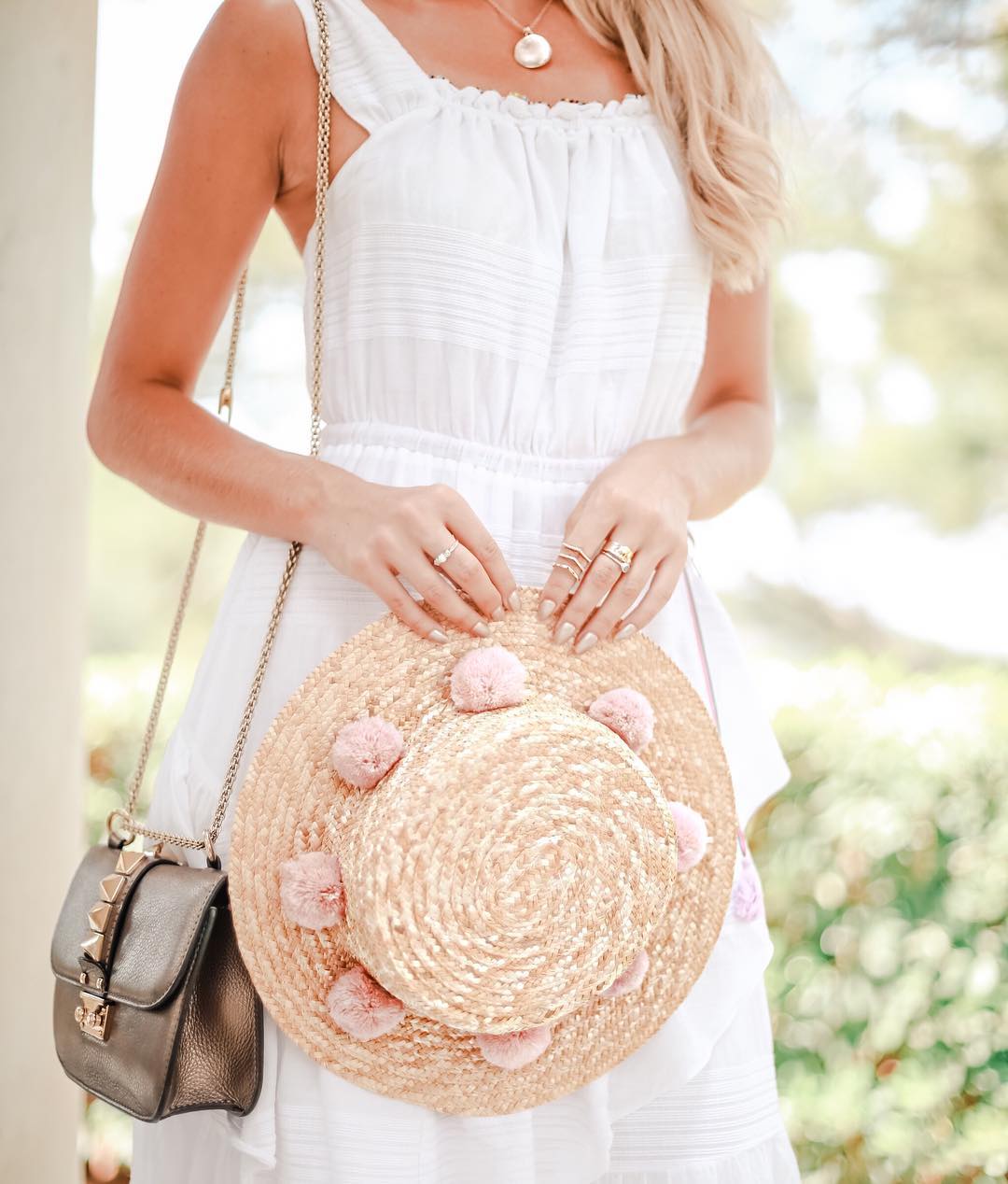Fashion Forward and Eco-Kind: 11 Vegan Materials to Spruce Your Style
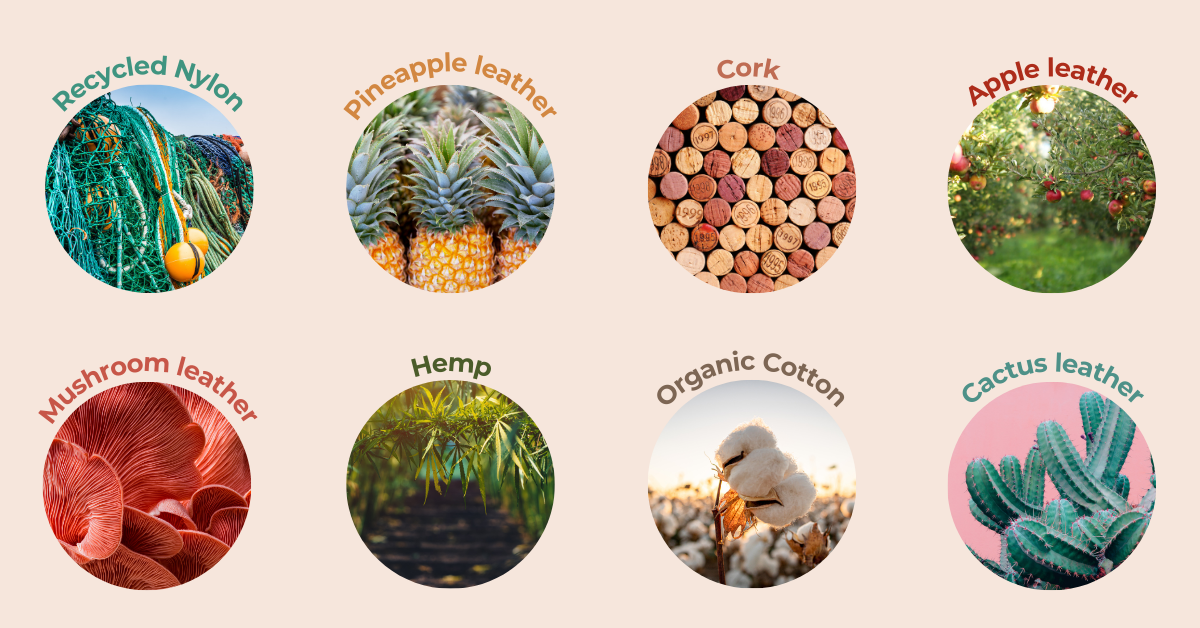
This post contains affiliate links, so if you make a purchase I may earn a commission at no extra cost to you. Learn more here.
It’s a seriously fun time to be on the prowl for fashion made from vegan materials. Between the speed of innovation and the caliber of materials emerging as a result, it’s a very exciting and very fashionable space. And whether you’re vegan or simply looking for sustainable alternatives to animal materials that will infuse your wardrobe with eco-friendly gems, you’re sure to find plenty of cutting-edge, high-quality vegan materials to get excited about.
This post is organized by types of vegan leather — the many sources of which may surprise and delight you — and other sorts of vegan materials like those made from cloth and recycled plastic. You’ll also find a section at the end about PVC (polyvinyl chloride, a very common vegan leather option), what’s so problematic about it, and why I suggest avoiding it in your search for vegan options.
Throughout this post you’ll also find links to brands that are using these amazing materials, and you can visit the Florah brand database to peruse a more complete list of the innovative brands harnessing these materials… with truly fabulous results!
Sustainable Vegan Materials
Vegan Leather

Apple Leather
Or, more specifically, apple peel leather. This unique material uses a food waste product as its base — the leftovers from apple juice production! Typically, the apple peels are dried, ground into a powder or flour, mixed with PU leather (see below) and then colored. Then it’s ready to use. Brands like BHAVA, Svala, and HOZEN make gorgeous vegan bags, shoes, and accessories out of apple leather.

Cactus Leather
Cactus leather, which might sound a tad prickly, is in fact smooth, luscious, and breathable. It’s made by comes from harmlessly harvesting the leaves from the prickly pear cactus twice a year. The leaves are smashed, sun-dried, and turned into a powdered protein that’s mixed with dye and turned into bio-resin. That resin is then poured onto a base fabric like cotton or polyester – and voila! (Thanks to Treehugger’s helpful article on the topic.)
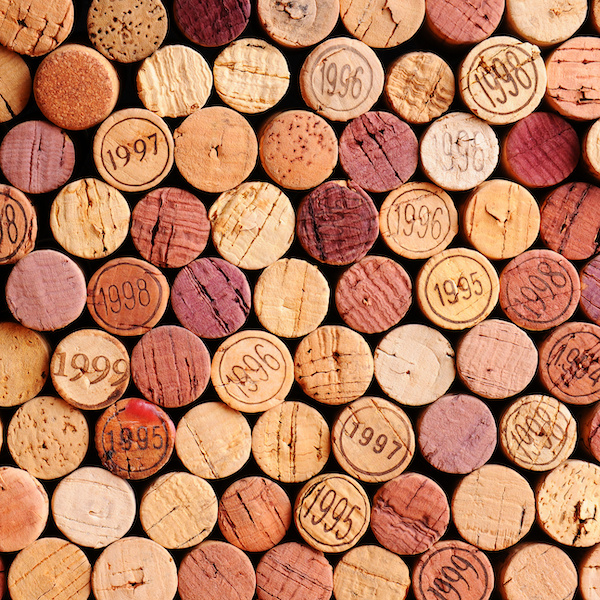
Cork Leather
Cork comes from the bark of the cork oak tree. The bark extraction process is done only once every nine years, doesn’t hurt the tree, and is very renewable. As a finished material, cork is waterproof, stain-resistant, and easy to clean – definitely one of the materials of the future! There are a few companies focused on cork-based bags and accessories, including Corkor, which is all-vegan and centered on sustainability. On their website, Corkor explains:
“Unlike the heavy chemical processing of leather, cork leather production is chemical-free. After being harvested, cork is left to air dry for six months and then boiled and steamed. Heat and pressure are applied to press it into blocks, which are later sliced in thin sheets that can be transformed in a multitude of cork leather accessories. Because of the simple and natural processing, cork fabric retains all the qualities “raw” cork is known for, namely the lightness, water resistance, stain resistance, slow burning, softness and uniqueness.”

Pineapple Leather
It’s true – not even Spongebob’s house is safe from the feverish innovation in vegan leather. Pineapple leather is made from the leaf fibers of pineapples… so cool! Piñatex® is the big player in the space right now, and they say on their website, “Piñatex® is made from the leaves of the pineapple plant, the byproduct of the fruit industry, which are traditionally discarded or burned. Adding value to this waste has created a new source of income for farming communities who otherwise rely on a seasonal harvest. Once the fibre has been stripped from the leaf the leftover biomass is retained to use as a natural fertiliser or biofuel, offering a further economic prospect.”
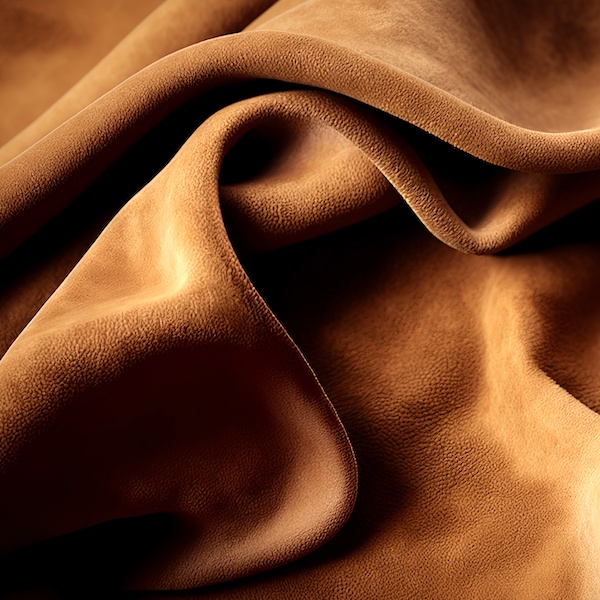
Microsuede
This material is a type of manmade (person-made) polyester fabric. (Polyester itself can be plant-based or made from synthetic materials.) To create microsuede, manufacturers weave ultra-fine polyester fibers together to create a dense fabric akin to suede leather. But microsuede is more cleanable and often softer than animal-based suede, an is stain-resistant, water-resistant, durable, and inexpensive. (Note that “Ultrasuede®” is the trademarked brand name – and product name – of the company that invented microsuede in 1970. Ultrasuede is the same material as microsuede, but its name is like “Kleenex” is to “tissues.”)

Mushroom Leather
Or, tehchnically, mycelium leather. Mycelium is the underground root system of mushrooms. And Bolt Threads is using the cells from mycelium to grow… vegan leather. They call the product Mylo™, and it is highly sustainable and very leather-like. And you KNOW it’s a quality product when Stella McCartney uses it in her bags.
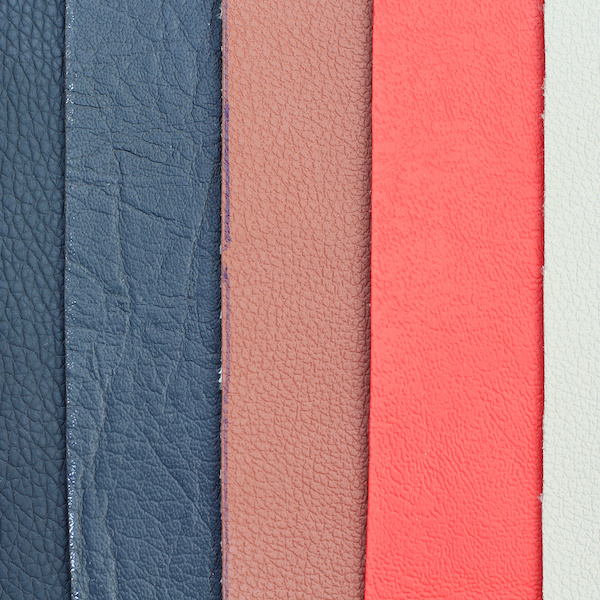
Polyurethane (PU) Vegan Leather
It is important to note: PU leather may or may not be vegan. (Though everything you find on Florah, including any PU leather, is vegan.) 100% synthetic PU leather is, by definition, vegan. And it’s sort of like PVC’s nicer cousin (see below). It’s also plastic-based, but is less toxic to the environment than PVC and is being improved upon all the time. Sometimes, however, “PU leather” will be used interchangeably with “bicast leather,” which is real leather that’s been sprayed with polyurethane. So it’s always a good idea to double check that PU leather products are labeled as “vegan.” On this site, we will be vigilant and will only promote truly vegan polyurethane products!
PU vegan leather deserves a couple disclaimers. First, the elephant in the room is that a plastic-based product is, all things considered, not the most eco-friendly. It’s still part of the problem. But I’d argue that it’s the lesser of two evils, both relative to leather and to PVC. PU vegan leather is a significant improvement over the toxic chemicals and processes that characterize leather and PVC production.
Next, one compelling argument I’ve seen cited on many vegan companies’ sites in defense of PU vegan leather is that it’s the best option at a price that’s affordable enough to stay in business. Apple leather and pineapple leather are amazing innovations, and holistically sustainable, but they’re way more expensive at present. So the argument goes: should we do nothing to provide leather alternatives, or do the best we can using PU leather until the truly eco-friendly materials come down in price? To me, steps in the right direction are much better than no steps at all. For that reason, Florah covers and promotes ethical companies that use PU vegan leather.
Cloth and Recycled Vegan Materials

Hemp
Hemp requires less land and water to grow than cotton, enriches the soil, and requires little to no pesticide! It’s really a lovely fabric. Brands like Lights of All (general apparel), LA Relaxed (general apparel), Groceries Apparel (general apparel), and Natasha Tonic (swim) use hemp in their garments.

Organic Cotton
Organic cotton is grown without the pesticides, herbicides, and insecticides that characterize traditional cotton. It also uses much less water & energy than non-organic cotton. With few exceptions, all products made with cotton on Florah use organic cotton. And would I still opt for non-organic cotton over any animal-based fabric any day of the week? Sure would.
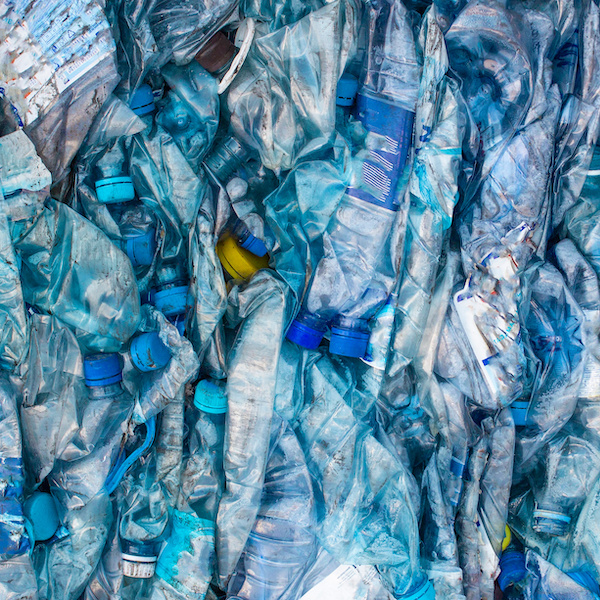
Recycled Polyester (aka PET)
Recycled polyester is often made from recycled water bottles, serving the dual purpose of reducing the need for new materials and providing an outlet for bottles that might otherwise end up in a landfill. It’s super common to see this used as the lining fabric is vegan purses and wallets, as well as sustainable swimwear and activewear!

Recycled Nylon
Recycled nylon is often made from recycled fishing nets, helping to reduce the mass of plastic pollution in our oceans. It’s a common component in sustainable swimwear, which is a nice full circle kinda moment – the same materials that would otherwise have been floating around and hurting wildlife may return to the sea, just temporarily and harmlessly, in swimsuit form!
The Problem with PVC
Polyvinyl Chloride (PVC): PVC is basically the OG vegan leather, and it’s what you’ll see many super-affordable vegan bags, shoes, and accessories made out of. It’s plastic-based, and made by fusing a fabric backing and a plastic coating. But unfortunately, it comes with major drawbacks from an environmental standpoint and has many toxins associated with it (both in production and final product), so it cannot be considered sustainable.
It’s certainly fair to say that not all vegan materials are created equal. When I first created Florah, my stance was that any non-animal materials were worthy of promotion. And while my personal stance is that even the most harmful vegan leather (PVC) is not as harmful as animal leather in the big picture, I think that it’s important to draw a line. So, here ’tis: Florah does not promote products made with PVC.
While animal exploitation is the most important question for me when it comes to the source of materials, it can’t be ignored that something like PVC vegan leather is really bad for the earth, the people producing it, and arguably for those who purchase and use it. And although it’s among the cheapest (if not the cheapest) vegan leather available, there are plenty of options that are more sustainable and much high quality to choose from.
Great additional resources:
Compassionate Closet – Comprehensive guide to vegan vs. non-vegan fabrics
The Minimalist Vegan – Lovely article on kind, sustainable fabrics
